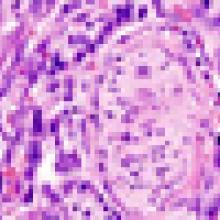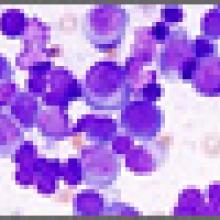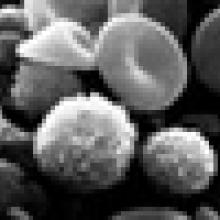Newsroom
Using carbon to build 'forests' inside extremely small nanoparticles, scientists from Harvard and MIT, have constructed devices that can specifically bind and trap cells, bacteria and viruses. Devices based on the technology could be used to detect cancer cells circulating in the blood.… more
Blocking blood vessel development (angiogenesis) is an attractive way to treat cancer. Because the cancer cells themselves are not being targeted, there is less genetic instability in the targets. Despite this, drug resistance to anti-angiogenesis treatments is common. Researchers have… more
CQChemicals derived from soy beans have been shown to have numerous biological affects. New research from Wayne State University has shown that soy compounds can increase the killing of lung cancer cells caused by radiation. An increase of this type is called 'radiosensitization'.… more
Eat your fruits and vegetables. This rule of thumb has been passed down for ages, and now concerned parents have yet another helper. In a recent presentation at the 102nd annual meeting of the American Association for Cancer Research (AACR), Ohio State University researchers revealed results… more
When pancreatic cancer cells to grow, they require the break down of cellular organelles and macromolecules via a process called autophagy. Targeting this process may offer an additional approach to improving the treatment of pancreatic cancer. When autophagy is inhibited, the body produces more… more
Ovarian cancer is a leading cause of cancer death in women. A new sugical method of reducing cervical cancer risk has been tested in a primate animal system (rhesus macaques). The technique involved removal of the epithelial cells coating the ovaries with detergent. This portion… more
Pancreatic neuroendocrine tumors (panNET) are among the rarest forms of pancreatic cancer, accounting for only about 2% of reported cases. In general, the prognosis for pancreatic cancer is poor, but new research out of the University of Texas M.D. Anderson Cancer Center indicates that the drug… more
As tumors grow, they often develop oxygen-poor areas within their centers. These areas, called hypoxic regions, pose a formidable obstacle to cancer treatment. Not only is it difficult to deliver drugs to these sites; the presence of hypoxia often correlates with a greater risk of aggressive tumor… more
Pancreatic ductal adenocarcinoma (PDA) typically has a poor prognosis. One reason is that the immune system within these tumors is shut down, preventing immune recognition and elimination of cancer cells. A recent article in Science, however, underlines a technique that may reverse this process.… more
Gene expression in each individual cell by is controlled by altering the structure of the DNA. One major way is altering its degree of coiling; uncoiled DNA is available to be copied into RNA but tightly coiled DNA is not. It would be like unwinding string from spool of thread.
BRAF is the… more
Genome sequencing offers a unique and compelling approach to cancer research. Because cancer is a condition when normal cell functions break down, studying gene patterns may reveal specific mutations that lead to specific diseases. A recent study published in Nature documents the gene sequencing of… more
Next to skin cancer, prostate cancer is the second most commonly diagnosed cancer for men, and it is the second leading cause of cancer-related death in men. While the initial growth in the prostate is serious, a patient’s prognosis worsens once the cancer has spread (metastasized) to other parts… more
As technology continues to march forward, the world of medicine has rapidly adopted the newest advances.. Today, robotic surgery is becoming increasingly common. Robot-Assisted Radical Prostatectomy (RARP) was the first major robotic surgery performed, but only recently has the safety of the… more
Many anti-cancer therapies work by inducing genetic mutations, which can damage cells so severely that they ultimately fail to thrive, or are otherwise eliminated by the body’s natural processes. Unfortunately, cancer arises as a consequence of genetic mutation, thus many anti-cancer drugs carry… more
According to the American Association for Cancer Research, 68,130 people in the U.S. were diagnosed with melanoma in 2010, and 8,700 died of the disease. The majority of these deaths were the result of metastasis, when the cancer spreads to distant parts of the body. A new study published out of… more
Melanoma is the most aggressive form of skin cancer, and in a society where many are focused on baking their skin to a golden brown, melanoma’s incidence is increasing at a faster rate than any other cancer. Unfortunately, melanoma is a difficult cancer to treat, which is largely because the cancer… more
Statins are a type of drug commonly used to lower cholesterol levels. They work by interfering with the activity of the enzyme, HMG-CoA reductase, a key enzyme in cholesterol production in the liver. Recent studies have indicated that statins also can benefit high-risk localized prostate cancer… more
When a cancer becomes resistant to chemotherapy, the patient's prognosis worsens. Overcoming drug resistance is key to improving patient survival. Recent studies have shown that improving drug delivery may prove a key step in fighting certain resistant cancers, such as recurrent breast and liver… more
Telomerase is critical for the development of most human cancers. Without this enzyme, chromosomes become progressively shorter each time the cell divides, and after a certain point, the chromosomes are too short to be reproduced successfully. At this point, the cell enters into a state of non-… more
A study of over 800 prostate cancer patients showed that a short course of anti-androgen therapy was able to boost survival and reduce the spread of locally advanced cancer to distant locations in the body. The research showed that 6 months of therapy was sufficient whereas 3 months did not… more
















